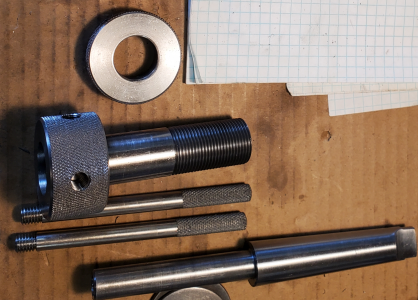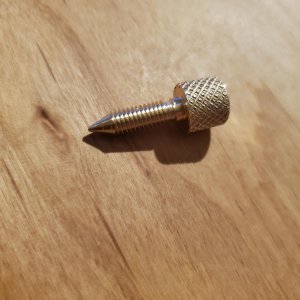- Joined
- Feb 15, 2015
- Messages
- 65
Machine is a PM-1236 so it should be rigid enough. I cut dry and didn't use cutting oil or coolant. I don't normally use oil or coolant on 12L14 and get a good finish. The dry cuts for the other parts of the part were fine with no chatter and excellent finish, only the thread. It looked to me like it was tearing rather than cutting. The tool holder was a Chinese SER1010H11 with minimum stickout from the tool holder. Insert was a Mitsubishi MMT11ER AG60 which is supposedly good for 8 to 48 TPI according to their catalog. Initial cuts were at 65 but I increased to 180 after the first 2 or 3. Infeeds were .011, .009, .008 .007, .006, .005, .004 and several spring passes. My threading with HSS tends to look just as poor. Alignment was made with the flat edge of the insert to the faced end of the part. Tool is on center using a tool center height gauge I made which works perfectly with other tools. I used the threading dial and used the same number every time. I did not keep the half nut engaged and back out of the cut.
Sounds like it may have been a cutting oil issue. I normally don't use cutting oil with 12L14 when turning but maybe I should when threading.
Sounds like it may have been a cutting oil issue. I normally don't use cutting oil with 12L14 when turning but maybe I should when threading.



